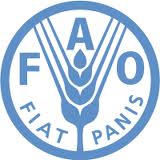 Rome - The FAO Food Price Index fell one percent in October 2012, and for the first ten months of the year food prices were on average eight percent lower than in the same period in 2011.
Rome - The FAO Food Price Index fell one percent in October 2012, and for the first ten months of the year food prices were on average eight percent lower than in the same period in 2011.
The Index dipped two points to 213 points from September’s revised level of 215 points. The decline was largely due to lower international prices of cereals and oils and fats, which more than offset increases in dairy and sugar prices.
Meanwhile the FAO Food Outlook, a bi-annual global market report also published today, noted that lower international prices and freight rates, together with lower cereal purchases, could push down the world food import bill in 2012.
Global expenditure on food imports was forecast at $1.14 trillion in 2012, 10 percent lower than last year’s record level.
"Despite tight markets, a set of conditions and measures have so far stopped international food prices from spiralling up as they did in 2007-2008 and 2009-2010. Chief among those are the improved international coordination and market transparency brought about by the G20’s Agricultural Market Information System (AMIS), which has helped to prevent panic and to stop the worst drought in decades turning into a food price crisis as has happened in the past," said the FAO Director-General José Graziano da Silva. AMIS has its Secretariat at FAO.
""Droughts or floods are not what causes crises, it’s lack of governance. In a globalized world, we cannot have food security in only one country or in one region. We need to strengthen the global governance of food security," added Graziano da Silva.
Tight cereal balance
According to Food Outlook, the balance between global cereal supply and demand is forecast to tighten considerably in 2012/13, due mainly to likely declines in wheat and maize outputs. World cereal production is forecast to fall by 2.7 percent from previous year’s record crop, leading to a 25 million tonne contraction in world stocks.
While the FAO Cereal Price Index remained 12 percent higher than in October last year, it fell 1.2 percent from September, mostly because of slightly lower wheat and maize prices. Current wheat prices reflect reduced trade activity, while maize values are down, mostly due to slowing demand from the livestock and industrial sectors. For wheat, world trade in 2012/13 is forecast to fall below the previous season’s peak. Prices are expected to stay above 2011 levels.
For coarse grains, the market is also expected to remain extremely tight in 2012/13, with FAO’s latest forecast for production in 2012 pointing to a 2.5 percent decline from the 2011 record level. Stocks are forecast to fall to historic lows.
Rice production may be set for new record
World rice production in 2012 may surpass last season’s record, supported by favourable growing conditions. Steady import demand, together with very ample export supplies, are sustaining an expansion of trade in 2012, with a further, albeit small, increase foreseen in 2013.
World cassava output is expected to increase vigorously in 2012 and may continue to do so in 2013, sustained by growth in Africa, where cassava remains a strategic crop for both food security and poverty alleviation. Prospects are more uncertain in Asia, where the sector expansion next year will largely depend on the competiveness of cassava as an ethanol feedstock. In 2012, world trade in cassava products is set to undergo a marked increase, entirely sustained by industrial demand.
The 2012/13 oilcrop season is opening under the legacy of a tight 2011/12 balance and a disappointing soybean crop in the United States. Current supply and demand forecasts for the new season provide limited scope for a relaxation in prices - at least until prospects for record South American soy crops are confirmed.
New record for sugar too
World sugar production is forecast to reach a new record, more than covering projected global sugar consumption. Large export availabilities in key supplying countries, along with a rebuilding of sugar inventories in major importing countries, are expected to boost trade in 2012/13. The FAO Sugar Price Index averaged 288 points in October, up 1.6 percent (or 4.5 points) from September, but down 20.2 percent (or 73 points) from October last year.
For meat, global markets are challenged by high feed prices, stagnating consumption and falling profitability. Growth in total meat output in 2012 is forecast at less than 2 percent. With international prices close to record highs, growth in world trade is also slackening. The FAO Meat Price Index averaged 174 points in October, unchanged from September.
The FAO Dairy Price Index averaged 194 points in October, up 3 percent (or 6 points) from September. A seasonal tightening of export supplies and low stocks, along with a firm world demand, are responsible. Milk prices could increase further because of lack of substantial growth in output in the main exporting countries. Milk production is expected to continue to grow in many countries, especially in Asia, Oceania and South America.
Weakening import demand caused international fish prices to drop in the first half of 2012. The dip mainly affected farmed species, and not wild fish, such as tuna.
Source : FAO